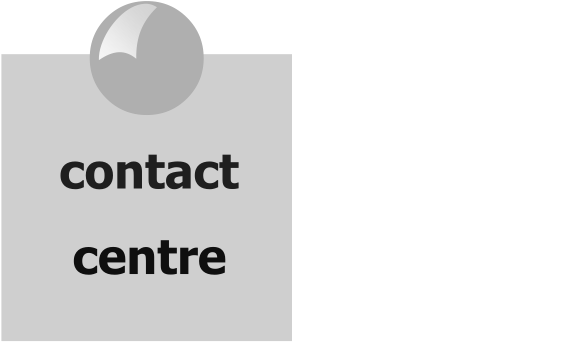Survival tactics during a business merger
Why external rather than Internal?
Making the right choices and decisions and pushing the correct buttons to get things done, on time and under budget, are key M&A objectives – not easy if the key Change Director is professionally close to those individuals that might be released as a result of consolidation effort. Consider external interim resources as they carry no baggage while making clear objective decisions for the business.
When engaging in a merger or acquisition the complexity of issues for consolidation of staff and technology becomes a highly charged and often underestimated undertaking.
Apart from the obvious joining up of financial and fiscal systems in an acquisition, IT plays a major role as different IT systems must be consolidated and made to work together, in order to reduce acquisition cost creep. Bringing in senior consulting skills from outside the company to manage the Transformation programme or IT change could be as critical as the target acquisition for the business.
“Board members all know that a merger has risk which needs to be managed — not only politically but technically. It’s about how to reduce, what I call, post-merger ‘Join-up time’ that really makes a successful acquisition.” Suggests Craig Ashmole, Founding Partner at London based CCServe Consulting. “In my opinion an executive or board appointed key ‘Point-of-Contact’ is required, bridging the Board with the Operational side of the merging companies, and someone without emotional ties to those same employees.”
In a post-merger situation making the right choices and decisions and pushing the right buttons to get things done on time and under budget are key objectives – not easily made when one is personally professionally close to individuals that you might be releasing as a result of consolidation. This is where the independent approach works best; as senior skilled Change consultants don’t carry baggage, they carry the ability and gravitas to understand what needs to be done, make tough decisions, and to attempt to do it under budget.
“In a recent M&A due diligence exercise I was engaged, one of the key factors observed and what ultimately resulted in a successful acquisition was ‘being transparent’ in dialogue between the acquirer and the acquired parties, so ensure to have a functional communication strategy in place”, Craig goes on to say.
Reading an interesting article by Mary Shacklett I found some key and not-so-obvious points which endorse what I consider key actions while driving an acquisition or carve-out, namely:-
1: Understand what is really at stake
Mergers aren’t just “clinical” projects that convert systems so they work together. For IT and throughout the organisation’s involved, mergers mean that some jobs are likely to be consolidated as well. Some staffers are going to keep their jobs while others might not. Then there comes the bun fight of who’s more skilled or who has more value for the business. Not forgetting IT staff also have technical allegiance to systems that it may be familiar with. So if a favoured system is designated for termination, there could be fear and bitterness especially if it eliminates particular technical skill sets required. IT engineers are often creatures of habit.
2: Consider sabotage in your risk management strategy
Consolidation between two companies often creates a “victim” company whose systems are going away, where IT staffers may be uncooperative or withhold vital information needed to safely convert their systems to the new platform. This is a subtle form of non-cooperation, so not really pure “sabotage” but one done to try to hold on to their positions and in some cases where severe elements of this happen as pure anger and desire for the acquisition to fail.
Something not to be missed is the inherent risk of converting what I call bespoke unprotected and unsupported applications or “black box” solutions without clear documentation. If it’s a high dependent application then this is high risk for open standards conversion.
3: Communicate the “Good” the “Bad” and the “Evil”
When project news is bad, give it to the people in what I refer to as no-nonsense straight-talking and as quickly as possible once it’s been brought to your attention. Some project managers struggle to deliver bad news, then small problems fester until they become insurmountable. Seasoned interim business executives understand how difficult system consolidations are, so are usually strong executive stakeholder managers. A seasoned Business Change consultant will also quickly see the development of out of place staff actions or activities which may well prevent corporate data loss or fraud. I have even seen IT staff loading servers and PCs onto trucks when moving departments and then selling them on from their garages.
4: Lay out your staffing plans as soon as reasonably possible
If some staffers are going to lose their positions because of the merger, ensure to negotiate reasonable settlements and provide employment assistance for them as part of the cost of acquisition. This should be managed and actioned as early on as possible to prevent disruption of those staying on. Get new organisational structures communicated sooner rather than later as this provides untold stress and drops staffing moral the longer it is left.
5: Ensure that there is a vendor strategy
Vendors don’t like to be the ‘fall-guy’ in an acquisition so be prepared for some vendors to be unusually and sometimes unreasonably slow to respond to requests for de-commission programs, especially if they start to throw their contract terms at you.
The vendor contract should be reviewed early on to understand the risk factors for a de-commission. Also in my view you can use the ‘stick and carrot’ approach as no vendor wants to have the market told that they have lost a key account and in the carrot method giving a vendor more of the ‘pie’ can enable more favourable cost points or better contract terms.
So in Summary
One cannot ever overdo visibility in a Change Transformation project so keep the executive stakeholders appraised on the complications and sensitivities, and of course, the achievements as they come – weekly communication in my view with the use of visible colour coded charts and a big favourite of mine the RAG chart ( Red Amber Green; charts on all workstreams) as most often project success is when the executives are in knowledgeable control and there are no sudden curve balls thrown in their direction.




Recent Comments